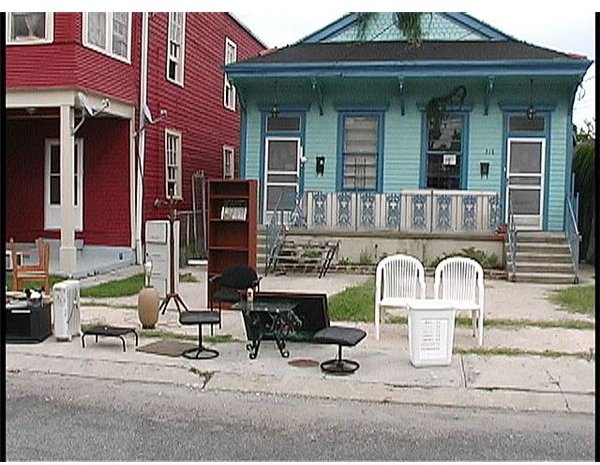Eviction Process for Renters: General Landlord Guidelines
Landlords evict tenants every day for a variety of reasons, ranging from failure to pay rent to conducting illegal activity inside the home or apartment, or sometimes for no wrongdoing on the tenant’s part. However, landlords must remember that while they retain ownership of a rental property, entering into a lease or rental agreement does give the tenant basic rights to what the law calls “quiet enjoyment.” The law is also often generous in treatment of tenants in the eviction process, because a successful eviction often results in the tenant losing his or her home. Many landlords run afoul of the law in their attempts to get rid of undesirable tenants. Although laws and regulations vary widely by state and even in specific cities or towns, there are some requirements in the eviction process that all landlords must meet in order to lawfully evict a renter.
This article describes general situations concerning evicting a tenant from a rental property. Please consult with an attorney in the appropriate jurisdiction who specializes in landlord and tenant law or real estate law concerning specific legal circumstances.
General Eviction Requirements
There are three steps to a lawful tenant eviction: providing proper notice, filing a legal claim if necessary and the actual eviction process if the tenant refuses to leave. At each stage, the law imposes requirements which landlords must meet. Landlords who try to cut corners may find themselves with reduced legal recourse against a tenant who refuses to leave.
Landlords must provide tenants with proper notice of their desire to have the tenant vacate the property. In most instances, landlords must also allow tenants to remedy the reason for eviction, if possible. This means that if a tenant is behind in rent, the landlord must allow the tenant an opportunity to pay the back rent within a specified time determined by the law. If the tenant does so, the eviction cannot go forward.
If a tenant refuses to remedy the stated reason for eviction and refuses to vacate the property, the landlord must approach the court to obtain a judgment for “unlawful detainer” against the tenant. The tenant receives notice of the lawsuit, and has the opportunity to present his or her side of the dispute in court. Depending on the complaint by the landlord and any defenses raised by the tenant, the judge may grant the landlord’s request and allow the eviction to go forward, or refuse the landlord’s request and allow the tenant to remain.
If the court grants the landlord’s request, the law requires the landlord to grant the tenant a certain amount of time to vacate the premises. If the tenant fails to vacate the property within the time specified by the court, then and only then may the landlord begin the process of evicting the tenant. The landlord must provide a copy of the judgment to the local sheriff, who schedules and carries out the actual eviction.
Section 8 Evictions
For landlords whose tenants hold Housing Choice Vouchers, popularly called “Section 8” vouchers, the regulations concerning eviction are especially strict. Landlords may evict tenants only for cause – failure to comply with the rental agreement, for conducting criminal activity on the premises or for other “good cause” related to federal or state law or a failure by the tenant to adhere to the rental agreement. These strict requirements are in exchange for the rental subsidy guaranteed to the landlord by “Section 8” vouchers.
Variations in the Law
States and municipalities vary in the amount of notice required by landlords to inform tenants of the intent to initiate the eviction process. In addition, some states require landlords to provide tenants with the opportunity to correct the circumstances that have prompted the landlord’s desire to evict the tenant; other states allow landlords to initiate the process without allowing tenants any such opportunity. The law also varies in the amount of time the landlord must grant the tenant to vacate the property after providing notice and again after obtaining a judgment from the court for “unlawful detainer.” During each state of the eviction process, the landlord may not take what the law calls “retaliatory measures” such as changing the locks or cutting off the water in an attempt to force the tenant to move.
Variations in the law also depend on the nature of the rental agreement, or lack of one. If the tenant leases the property on a monthly basis, the landlord generally must allow the tenant 30 days to vacate the premises. If the tenant leases the property on a weekly basis, the landlord generally must allow the tenant seven days to vacate the premises. In circumstances where there is no lease or rental agreement, the laws of the relevant state or municipality apply concerning the length of notice landlords are required to give tenants at each stage of the eviction process.
References
- American Bar Association. Chapter Six – Renting Residential Property, in ABA Family Legal Guide, at https://www.abanet.org/publiced/practical/books/family_legal_guide/chapter_6.pdf
- American Bar Association: 10 Things Landlords Should Know About Fair Housing, at https://www.abanet.org/genpractice/newsletter/lawtrends/0509/realestate/10thingslandlords.html
- Easy Eviction Notices: Eviction Notices, at https://www.easyevictionnotice.com/faq.asp
- Easy Eviction Notices: Types of Eviction Notices, at https://www.easyevictionnotice.com/eviction_notice_type.asp
- Findlaw: Rules for Landlords and Property Manages When Evicting a Tenant, at https://realestate.findlaw.com/landlord/landlord-eviction/landlord-eviction-rules.html
- GPO Access: Title 24 00 – Housing and Urban Development, at https://ecfr.gpoaccess.gov/cgi/t/text/text-idx?c=ecfr&sid=037a551e1f4da4ae537df8ee3f690aed&rgn=div5&view=text&node=24:2.1.1.2.24&idno=24
- Landlord.com: Evicting Your Tenant, at https://www.landlord.com/evicting_your_tenant.htm
- Legal Match: What Is an Eviction, at https://www.legalmatch.com/law-library/article/wrongful-eviction-lawsuits.html
- Legal Match: What Is Constructive Eviction?, at https://www.legalmatch.com/law-library/article/constructive-eviction-lawyers.html
- Nolo.com: How Evictions Work – Rules for Landlords and Property Managers, at https://www.nolo.com/legal-encyclopedia/article-29740.html
- Rentlaw: Eviction – Evicting Tenants, at https://www.rentlaw.com/eviction.htm
- Rentlaw: Landlord-Tenant State List, at https://www.rentlaw.com/statelist.htm
Photo Credit
- Flickr. Bart Everson. Possessions: Tenants evicted; from Editor B’s photo stream
